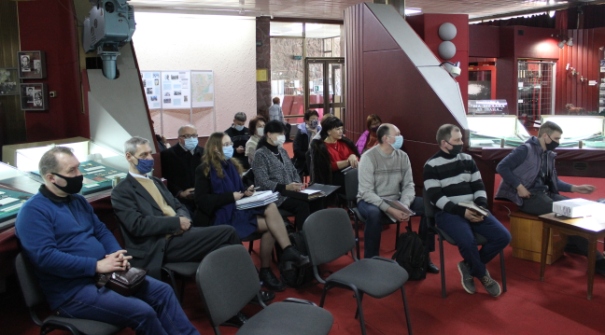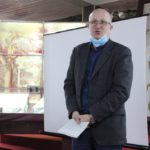24 March 2021 року у Військово-історичному музеї – філії Чернігівського історичного музею імені В.В. Tarnowski hosted a round table "Chernihiv - partisan land", which was devoted to the history of the Soviet guerrilla movement in the Chernihiv region during World War II.
They took part in the round table: Ukrainian Institute of National Memory, (chief specialist Serhiy Butko), Державний архів Чернігівської області (director, Candidate of Sciences in Public Administration Raisa Vorobey), Archival subdivision of the USBU in the Chernihiv region (employee of the unit Tatiana Gapienko), Educational and Scientific Institute of History and Socio-Humanitarian Disciplines named after OM. Lazarevsky National University "Chernihiv Collegium" (Head of Department, професор, Candidate of Historical Sciences Andriy Ostryanko), Municipal Institution "Chernihiv Regional Research and Editorial Center" of Chernihiv Regional Council (Director Olena Potapenko), Koryukiv Historical Museum (senior researcher Andriy Naumenko), representatives of the Chernihiv Regional Historical Museum named after VV. Tarnowski - Mykhailo Zhyrokhov (head of the branch "Military History Museum") and Denis Drozd (senior researcher of the branch of MMK partisan glory "Lisograd").
Meeting of scientists, specialists, local historians and museologists testified, that the contradictions around the Soviet guerrilla movement were laid down during its formation, because it was organized by the authorities, and not society, in response to the actions of the occupier. Taking into account the legal framework of Ukraine, guerrillas should be considered participants in the struggle against Nazism. Among them were people of different morals and beliefs. Various reasons pushed people to go to the forest: desire to fight the occupier, hiding from punishers, approach of the Red Army to Chernihiv region in 1943 year, etc.. Heads of detachments and formations often engaged in "postscripts", when reporting on the actions of their units. Resulting, disputes among members of the guerrilla movement in Chernihiv region began immediately after the end of World War II, which led to serious conflicts, which the NKVD / KGB had to deal with. The issue of extreme cruelty of commanders towards the local population was raised, entourage, who were sentenced to death, sometimes for no reason, and in a wild and horrible way.
Exploratory excavations at the sites of former guerrilla camps allow to explore the little-known pages of the Resistance movement, as well as previously classified archival and investigative files of archival subdivisions of regional departments of the Security Service of Ukraine and the Sectoral State Archives of the Security Service of Ukraine. For a comprehensive and objective study of the history of the guerrilla movement in Ukraine, one should not rely solely on Soviet documents, and it is necessary to involve the widest possible range of sources, primarily research and materials of archival institutions of Germany and Hungary.
The participants of the round table did not overlook the issue of perpetuating the memory of these events. Many monuments and memorials are in poor condition, and plaques with the names of the dead sometimes do not correspond to reality.
The event was held by Serhiy Laevsky (Director of Chernihiv Regional Historical Museum named after VV. Tarnovsky) and Mikhail Zhirokhov (Head of the Museum Branch of the Military History Museum).










More Stories
2022 рік: Headquarters documents of the RF Center troops
Unification of Chernihiv museums
Cossack gear and the prices of the Hetmanate day